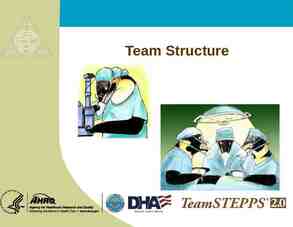Executive Summary
19 Slides126.29 KB

Executive Summary

What’s New? The 5YFV set out why the NHS needs to change; the 5YFV next steps sets out what will change in next 2 years and how the goals of the 5YFV will be achieved STP now stands for ‘Sustainability and Transformation Partnerships’ Change in role for NHSE - focus shifts decisively to supporting delivery and implementation of key priorities Public view - top five issues citizens want to see improved are addressed in the Next Steps (mental health services, convenient access to GPs, easier hospital discharge and better social care, reduced cancer waits).

Context 5YFV Next Steps is based on the 5 Paradoxes facing the NHS 1. We’re getting healthier but we are using the NHS more 2. We’re performing better, but we’re more transparent about care gaps and mistakes so perception is skewed 3. We have more staff but they are under greater pressure 4. The public are satisfied with the NHS but concerned for its future 5. There is consensus on how to future proof the NHS, but the ability to do so is overtaken by fire fighting

The Priorities Urgent and Emergency Care Primary Care Cancer Mental Health Integrated Care Funding and Efficiency Workforce Patient Safety Technology and Innovation

Urgent and Emergency Care What will be different? By Sept 2017 all trusts must be achieving 90% on the 4 hour target Front door clinical streaming Appropriate patient flow including D2A and Trusted Assessors and 7 day discharges New National Targets Free up 2-3000 acute beds 85% of CHC assessments in the community Implementing the high impact change model for DTOC 30% of 111 calls receive clinical assessment Enhanced support to care homes to ensure clinical access and on-site assessment Roll out of standardised Urgent Treatment Centres Ambulance response programme

Urgent and Emergency Care How will it happen? 100m capital funding to modify A&E to enable streaming Clearer local performance incentives – drop contract fines from April and focus on STP performance Single national lead for NHSE and NHSI improvement programme and amalgamation of the A&E improvement and UEC programme teams

Primary Care What will be different? Increased convenient access to GPs Streaming emergency appointment to alternative professionals (pharmacists, therapists) 100% access to OOH bookable appointments by 2019 Extra 5000 GPs Expansion of multi-disciplinary primary care 1,300 extra clinical pharmacists 1,500 extra MH practitioners 3,000 extra Physicians Assistants

Primary Care How will it happen? Increased investment in GP services Encourage practices to work in ‘hubs’ and networks for population size 30,000 to 50,000 and form federations, ‘super surgeries’, or Multispecialty Community Providers (MCPs) Sharing community nursing, MH, and clinical pharmacy teams Expanded diagnostic facilities Pool responsibility for urgent care and extended access Contract reform – transition from QOF to revised framework

Cancer What will be different? Better survival rates – an additional 5000 survivors by 2020 Expanded screening for prevention and early diagnosis for bowel and cervical cancer Faster test results New standard of definitive diagnosis within 28 weeks from 2020 Radiotherapy upgrade

Cancer How will it happen? 130m targeted investment Workforce expansion for endoscopy and radiology Clearer accountability through a new cancer dashboard

Mental Health What will be different? 60,000 extra places for talking therapies Better care for expectant and new mothers Improved CAMHS Care closer to home through increase in patient in-beds for CAMHS Specialist MH care in A&E Increased physical health checks for people on MH pathways Specialist transition services for veterans New specification for inpatients

Mental Health How will it happen? National and local investment standards Workforce expansion – 800 extra MH specialists embedded in Primary Care Commissioning reform – to expand local service and reduce out of area placements Support from Local Authorities to reduce DTOC for MH patients Greater transparency through new MH dashboard CAMHS green paper in 2017 Single national programme team encompassing NHSE, NHSI, PHE

Integrated Care What will be different? New partnership models encouraged to reduce growth in acute Increased integration of health and social care based on the BCF Creation of integrated (or ‘accountable’) health systems through STPs Accountable Care Systems (ACS) will be an evolved version of the STP that is working as an integrated health system ACS’s can – Agree an accountable performance contract with NHSE and NHSI – Manage funding for their defined population – Integrate horizontally (e.g. having one hospital on several sites) – Integrate vertically (e.g. with GPs in clinical hubs, MH and social services) ACS’s will have – Delegated commissioning rights for primary care and specialist services – Devolved transformation funding package – A one stop shop regulatory arrangement with NHSE and NHSI including a single integrated AIF and trust oversight framework – Redeploy staff and attributable funding from NHE and NHSI to support the local system Likely candidates for ACS include Frimley Health

Integrated Care How will it happen? New STP boards incorporating GPs, Local Authority and non-executive partners NHSE and NHSI to use interventions to ‘unblock’ STP partners or individual organisation who are standing in the way of local change Appoint an STP leader / chair (where this hasn’t already happened) Ensuring STP programme management support by pooling skilled resources from CCGs, CSU, Trusts and other partners NHSE will allow CCGs to realign their governance and management teams to the STP Geography NHSE will also deploys its own staff locally where appropriate Consider proposed changes to geographical boundaries to support patient flows NHSE/I will produce a policy framework under which STPs will operate STPs will be judged by success rather than assured by prescription

Funding and Efficiency The 10 Point Plan 1. Free up 2- 3000 hospital beds 2. Further clamp down on temporary staffing costs 3. Use NHS procurement clout 4. Get best value from medicines and pharmacy 5. Reduce avoidable demand, and meet demand more appropriately. Here we get a mention! Slough CCG – new complex care case management service reducing targeted demand on A&E by 24% and non-elective admissions by 17% 6. Reduce unwarranted variation 7. Estates, infrastructure, capital and clinical support services 8. Cut costs in corporate administration 9. Collect income owed to NHS 10. Financial accountability and discipline for all trusts and CCGs

Workforce What will be different? 6,000 extra registered nurses Improved retention Return to practice for non-working nurses How will it happen? New fast track programme – Nurse First (similar to teachers first) New advanced clinical practice nurse roles E-rostering and job planning –measured on the number of care hours delivered to the patient based on their care needs 25% more undergraduate medical school places Tackling pressures on junior doctors with initiatives such as ‘swap shop’ and support for returning after MAT leave Leading STPs and ACS will be able to offer staff flexibility, for example nurses working between primary and acute care and offering term time and seasonal contracts

Patient Safety What will change? Preventing healthcare acquired infections Increased maternity safety through ‘better births’ programme Learning from deaths Improved inspections Improved investigations Reducing medication errors New Patient Safety Incident Management Systems (PSIMS)

Technology and Innovation What will change? 111 online 111 telephony Online appointment booking Availability of patient records electronically Increased Apps to enable people to manage their own health

Full document https://www.england.nhs.uk/wp-content/uplo ads/2017/03/NEXT-STEPS-ON-THE-NHS-FIVE-Y EAR-FORWARD-VIEW.pdf






